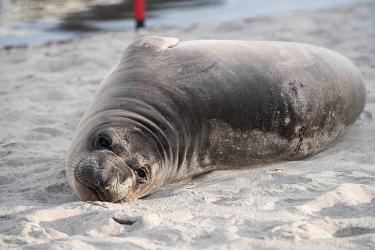The Life History Program researches the reproductive biology, growth, foraging ecology, and distribution of highly migratory and coastal pelagic species in the northeast Pacific Ocean. Through biological sampling, soft and hard tissue analysis, dissections, and tagging work, program scientists develop quantitative parameters for the following biological events of an animal’s lifespan:
- Reproduction: maturity schedules, gestation, fecundity, spawning intervals, sex ratios, spawning/mating season
- Growth: ageing, maximum length, longevity, natural mortality, length-weight-age relationships
- Foraging ecology: diet, predator-prey relations, feeding shifts and strategies
- Distribution: habitat use, movement, migration
These parameters are used in population stock assessments conducted by the Fish Population Dynamics and Modeling Program to inform regional and international management. Understanding species-specific life history parameters allows managers to determine sustainable harvest rates, respond to natural and introduced changes in populations, and predict the impacts of various management scenarios. Assessment results and management advice on coastal pelagic species are provided to the Pacific Fishery Management Council, while our team works with scientists from other nations within the International Scientific Committee on Tuna and Tuna-like Species in the North Pacific Ocean to conduct collaborative assessments on highly migratory fish stocks spanning the North Pacific. To learn more about all the data needed in stock assessments, visit National Oceanic and Atmospheric Administration’s Office of Science and Technology’s Stock Assessment Basics.
Our program is composed of researchers conducting diverse work in the laboratory, dockside, and at-sea in order to collect relevant biological samples and information year after year. The team collaborates with recreational and commercial fisheries, domestic and international research institutions, state agencies, universities, and the public.



